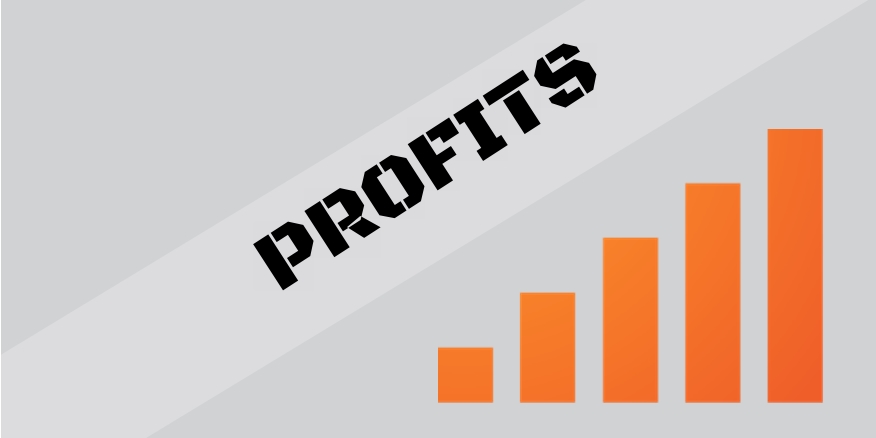ERP = Enjoy Rising Profits (Beware…Fake Acronym Alert)

Some days, running your own business can seem like a big dress rehearsal…going through the motions but without the standing ovation at the end of the performance. What can change that feeling? How is business actually measured? Profitability.
If the days you get to look at the bottom line and feel like clapping have long gone then you might want to think about your Enterprise Resource Planning system. Because we’ve listed three important ways of using your Enterprise Resource Planning system to put the sparkle back into your bottom line. Perhaps even make it feel a bit more like receiving a standing ovation. Think of your list of ERP systems as the main event.
For the Manufacturing sector, profitability is very closely related to your cost of goods sold. As the costs of raw materials rise so should your pricing. For goods in shops, quick inventory turnover correlates to better profitability. In either scenario the stuff that sits on shelves – components or finished goods – is a direct contributor to your ability to turn a profit.
Raw Material Cost Control
Enterprise Resource Planning systems use two types of valuations for materials, Standard (fixed) or Moving Average (variable/changing). Standard pricing is most relevant in semi-finished goods (retail for example). Moving average is most useful for raw materials or trading goods. Either valuation is a key component of your gross profit formula.
Commodity prices for raw materials can change daily. For example, do you manufacture furniture? You want to know the cost of timber on the free market at the time of purchase. The advantage of using moving average price for your input materials is that your inventory costs will always reflect the current market cost. As invoices from vendors are received, the new average cost of materials is calculated based on the current price of goods.
Variations concerning quantity and price are automatically entered into a “price difference account”.
If procurement costs change you are immediately aware of that change. Using an ERP for manufacturing system can help you have a “real time” understanding of your costs of goods sold. This knowledge is powerful in driving profits higher because you make better decisions. For example, don’t sell too much when your manufacturing margin is smaller best maximum profit is made when selling more product at higher margin.
Overstock / Stock Out
Do you have a crystal ball? Does it work like Professor Trelawney’s in the Harry Potter series? If so, you’re certainly got an advantage on the rest of us. If not, well, you are in good company. For those of us who only have experience and gut instinct how to predict how well (or not) a product will be received by the buying public, there are software systems that can help us with inventory level control. Use your ERP to manage this level proactively and use previous data to predict demand levels.
Balancing service levels for customers with inventory costs can be difficult. Enterprise Resource Planning systems identify your most popular sellers and keep those items at the right level for customers. If your product or service is seasonal, the system can help plan for the upcoming season and calculate optimum lead times, delivery times and delivery costs.
Think about how accurate planning can help with profitability by having inventory only when you need it. Purchase the things you need only when customers want them. This leaves your capital on hand instead of tied up in stock or raw materials you don’t need right now.
Reducing Risk by 360 Degrees
Having a complete 360 degree view of your stock situation can be invaluable to your business and profitability. It will allow you to better manage the risk in your manufacturing operation, knowing the best time to build, the best time to purchase raw materials, how to work more closely with sales and marketing. It will help you make better decisions. Lower costs of manufacture, more efficiency and keep your product output at the right level to meet demand. Lean manufacturing training going to work for your profitability.
We will be discussing this in detail with the next post, so make sure you open the next email. But in the meantime think about how having accurate reports / knowledge of stock can empower you to make the best business decisions possible.
Hopefully that makes you want to get up for your standing ovation.
{{cta(‘5be61378-2220-42a5-a139-20de11e27642’)}}

